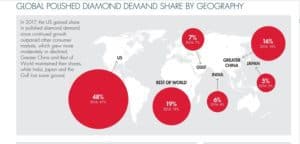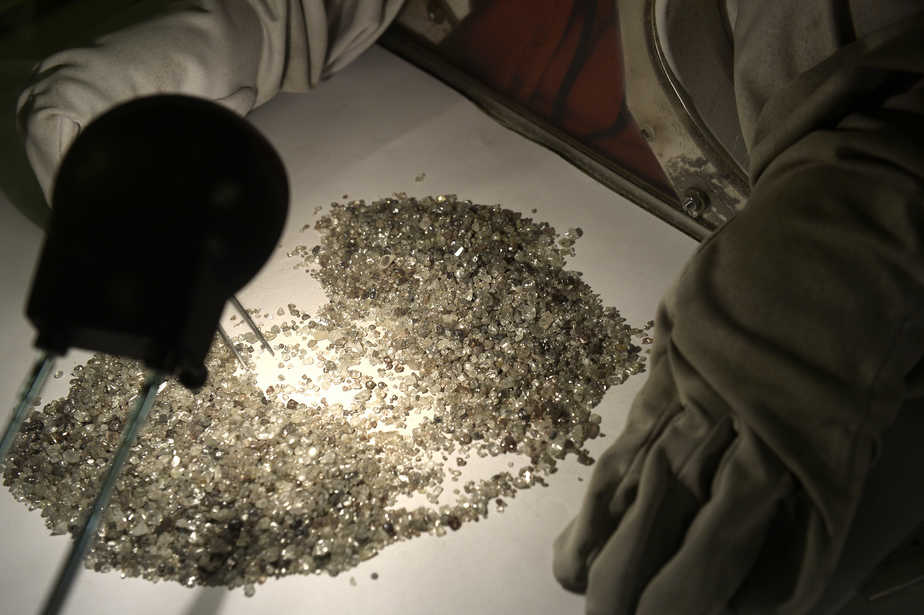As production of natural diamonds falls, and the bloodshed around their extraction causes revulsion, go for glitter made in the lab
Diamonds have for long been viewed as the symbol of grandeur and for some reason, love. But times have changed, and many reject this stone and everything it stands for – the significant effect on the environment, as every stone is delivered through mining; the threat of armed conflict over diamonds; and the extravagant cost for what is, after all, just a piece of jewellery.
How aligned are Indians to this worldwide trend? Will they accept this and withdraw their demand?
According to India Brand Equity Foundation, the gems and jewellery market in India is home to more than 3 lakh players, with the majority being small players. Its market size is about $75 billion as of 2017 and is expected to reach $100 billion by 2025. The country contributes 29 per cent of global jewellery consumption.
Parth Sutaria, Director at Hiraco – an Indian company which from manufacturing diamonds now deals solely with synthetic ones – believes that the Indian consumer would be drawn towards a lab-grown diamond solely for its price point.
While the US and European markets are wanting this alternative because it’s eco-friendly, and “they are conflict-free diamonds and don’t fuel terrorism”, the majority of Indian consumers do not have such concerns, Sutaria believes.
De Beers, which leads the market with its sales of diamonds, wants us to believe that even natural diamonds are now clean as a whistle. David Johnson, Head of Strategic Communication, De Beers Group in an email response, cites the Kimberley Process Certification Scheme first implemented in 2003, which was subsequently enshrined into law by 81 governments — India is a founding member. This process has been effective in “virtually eliminating conflict diamonds from the worldwide trade, with more than 99.8% of the world’s diamonds now being certified conflict-free,” he claims.

But with such a sizeable population of small players in India, the origins of the diamond become questionable. And not just that, the threat of being sold an adulterated diamond is high — or even a lab-grown one. Sellers of the latter are themselves a little hesitant in promoting their product, which could be down to the fact that Indians love the authenticity of a diamond.
Lab-grown diamonds have chemical and physical properties corresponding very closely to those of natural diamonds. Some makers swear that the chemical composition of a natural diamond is replicated by lab-grown ones. This thus makes it harder for lay persons to distinguish between them.
A synthetic diamond seller listed on IndiaMart, who also has a store in Delhi’s Karol Bagh market refused to speak to Patriot. This while their website markets them as a purveyor of lab-grown/synthetic diamonds. On Indiamart they share the price as Rs 5,000 per carat.
De Beers itself has become the biggest name to supply lab-made diamonds to the country, if reports in June this year are to be believed. Reports that the US company is about to launch a brand of synthetic diamonds has irked diamond traders here. Johnson, though refuted the plan. He says that reports of the group launching Lightbox Jewelry — their lab-grown diamonds in the US— “or any other laboratory-grown diamond offering in India are inaccurate”. He added that the group saw “limited demand for laboratory-grown diamonds in India”, because “Indian consumers prefer jewellery that possesses innate and enduring value.”
David says laboratory-grown diamonds are “as mass-produced items with potentially limitless supply”, which works against it.
This, even while their own synthetic diamond line was launched because there was, “a lot of confusion about what are laboratory-grown diamonds”, and they wanted to help “address this confusion”.
However, in India there are many who are increasingly rejecting natural diamonds amongst the younger populace. And this could be a make or break phase for the future of the diamond market.
The diamond insight report 2018 by De Beers cites India as being the most important market down to the millennial and GenZ population. It calls India “the youngest major diamond consuming country, where Millennials and Gen Z account for 70 per cent of the population”. The US consumes the most amount of diamonds; China has similar demographic profiles with 52 per cent and 53 per cent respectively; Japan is the oldest, with only 39 per cent of the population aged under 40.
One fact that has come to light recently is eye-opening: total diamond production in 2018 is expected to fall. The reason, says De Beers, is that some mines are suspending operations and others will experience fall in productions. It also says that by 2025, “Several large mines will reach the end of their life, while only a few new projects are in the pipeline.”
About time, as Earth has been extensively damaged in the craze for these “precious stones”. One estimate from 2016 says that some 128 million carats of diamonds were produced from mines worldwide, with current worldwide reserves estimated to be some 750 million carats.
Compare that to lab diamonds, which usually cost about 30% less than natural diamonds, and are grown in days or weeks, whereas natural diamonds were formed millions of years ago. The choice should be easy. For all parties to this trade, perhaps.





